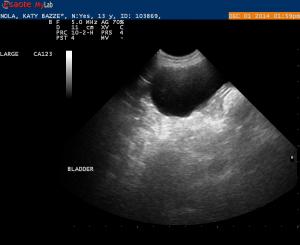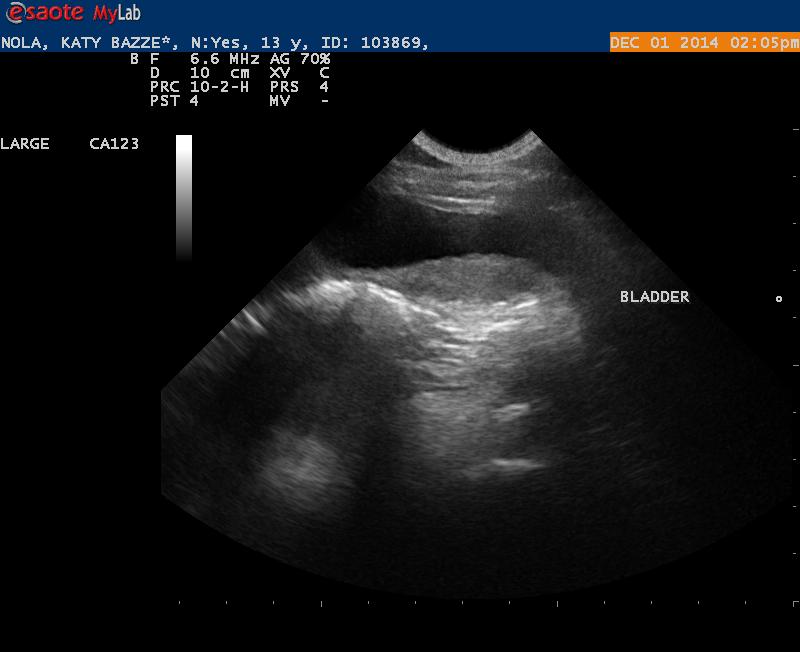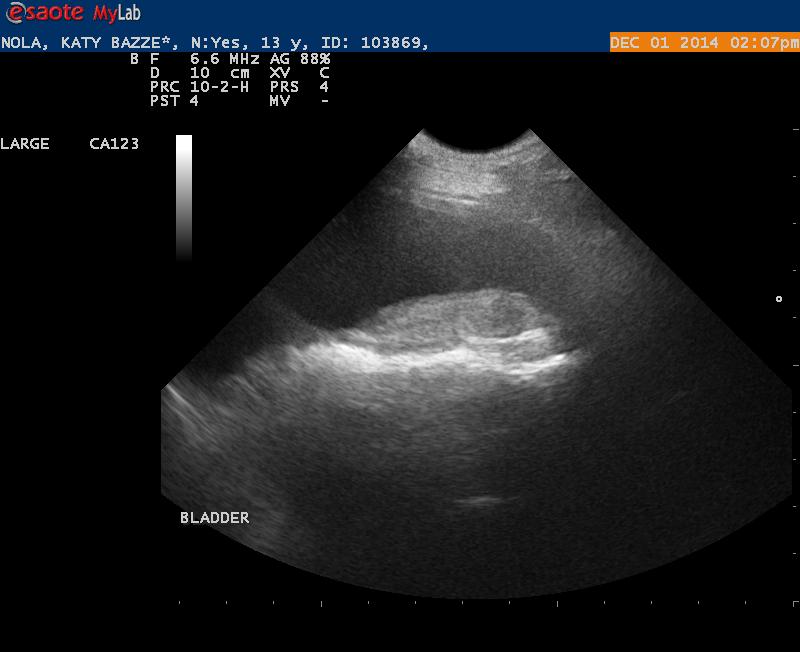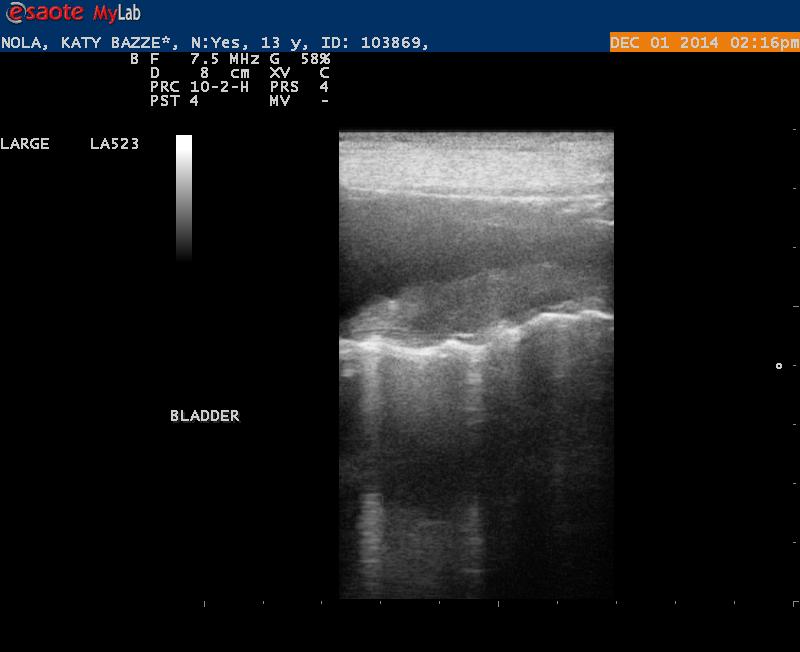Nola is a 14 year old Rotweiller X with a history of “posturing” to urinate as per the owner. I suspect this is dysuria/poilakuria. UA and Urine MIC was clear. X-rays did not show any signs of uroliths. I did an ultrasound on Nola today and I was wondering if I could get your opinion. Is there a mural thickening of the dorsal bladder wall or am I seeing artifact. Difficult to get good images. She had 2 small lipomas over her bladder on the ventral abdomen.







6 responses to “Bladder Mass”
great post and images
great post and images randy. Ok so this is a mural bladder mass infiltrating the muscularis layer and with some focal mucosal involvement. I screen shot one of your images and marked arrows . Long arrow: the muscularis split cranially as it goes from normal to abnormal caudally. Vertical line: the mass max width within the bladder wall. Mid arrow: serosa of the colon to separate the colon from bladder. Small arrow: the serosa of the dorsal bladder wall containing the mass wihtin it. If you follow these structures in your video you will see the layer separation and furthur caudally you can see the residual uterine stump separation as at first I thought this was an adhere u-stump. Key here is to scrupulopusly follow the lines within the infrastructure of the bladder. Hi res (12 mHz or higher) would light this up further. The mass also penetrates into the mucosal as it forms polyps toward the cystourethral junction. You will likely need full thickness to dx this. TCC can do this… leiomyosarcoma and other are the diffs. Scope may get a polyp or 2.
Go to the general search and search TCC or UGELAB and you will see tons of these of all shapes and sizes form our UGELAB work.
http://sonopath.com/members/case-studies/search?text=TCC&species=All
Traum catheterization tough here but may get lucky raking up the polyps.
great post and images
great post and images randy. Ok so this is a mural bladder mass infiltrating the muscularis layer and with some focal mucosal involvement. I screen shot one of your images and marked arrows . Long arrow: the muscularis split cranially as it goes from normal to abnormal caudally. Vertical line: the mass max width within the bladder wall. Mid arrow: serosa of the colon to separate the colon from bladder. Small arrow: the serosa of the dorsal bladder wall containing the mass wihtin it. If you follow these structures in your video you will see the layer separation and furthur caudally you can see the residual uterine stump separation as at first I thought this was an adhere u-stump. Key here is to scrupulopusly follow the lines within the infrastructure of the bladder. Hi res (12 mHz or higher) would light this up further. The mass also penetrates into the mucosal as it forms polyps toward the cystourethral junction. You will likely need full thickness to dx this. TCC can do this… leiomyosarcoma and other are the diffs. Scope may get a polyp or 2.
Go to the general search and search TCC or UGELAB and you will see tons of these of all shapes and sizes form our UGELAB work.
http://sonopath.com/members/case-studies/search?text=TCC&species=All
Traum catheterization tough here but may get lucky raking up the polyps.
Thanks EL. Each post is a
Thanks EL. Each post is a learning experience
Thanks EL. Each post is a
Thanks EL. Each post is a learning experience
Glad to hear it Randy! That’s
Glad to hear it Randy! That’s what we are about:)
Glad to hear it Randy! That’s
Glad to hear it Randy! That’s what we are about:)